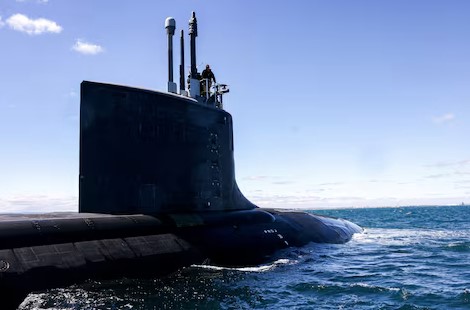Canada is preparing for one of the most expensive military purchases in its history — a brand-new fleet of submarines. The government plans to acquire up to 12 conventionally powered, under-ice capable submarines through this submarine deal. These vessels are designed to operate deep underwater for long periods and patrol the country’s vast coastlines, especially in icy Arctic waters.
Canada’s Costly Submarine Deal
The exact cost has not been officially announced, but early estimates suggest a massive price range between $60 billion and $100 billion. Even at the lower end, it would make this submarine deal one of the largest defense investments ever made by the country. For comparison, Canada’s new warship project — originally expected to cost around $26 billion — has now risen above $80 billion.
Officials have said the new submarines are essential to protect Canada’s national security and sovereignty. They will replace the current fleet, which has faced long-standing technical and operational problems.
$368 billion mistake? Growing fears AUKUS submarine deal could sink Australia’s sovereignty
The contract for the submarine deal is expected to be signed early next year. However, the process of building, testing, and training crews will take several years before the submarines are ready for service. The first vessel is not expected to be fully operational before 2037.
Why Canada Needs a New Submarine Deal
Canada’s existing submarines, known as the Victoria-class, were purchased from the United Kingdom between 2000 and 2004. At the time, these submarines were considered a cost-effective way to give the Royal Canadian Navy a renewed underwater capability. However, the decision has been controversial ever since.
After the submarines arrived in Canada, problems appeared almost immediately. Cracks were found in valves, high-pressure welds had to be replaced, and steel piping showed signs of corrosion. Water had also entered the fuel tanks while the submarines were in storage before purchase, which caused more complications later.
One of the submarines, HMCS Chicoutimi, suffered a major fire in 2004. Another, HMCS Corner Brook, stayed out of service for nearly a decade before completing sea trials again. These incidents raised serious questions about whether the submarines were worth the billions spent on repairs and maintenance.
Critics argue that Canada’s aging submarines have delivered limited operational value despite their high maintenance costs. Military officials, however, insist these vessels are essential for safeguarding Canada’s waters and monitoring Arctic activity. With the Victoria-class fleet nearing the end of its service life, replacing them has become a top priority.
Canada has narrowed its submarine deal to two contenders — Germany’s ThyssenKrupp Marine Systems and South Korea’s Hanwha Ocean. Both companies are competing to supply the next generation of submarines designed for long-range and under-ice operations.
Hanwha’s KSS-III model is already in service with South Korea, while ThyssenKrupp’s Type 212CD is known for advanced stealth and energy efficiency. Defense officials are now reviewing both designs to determine which best suits Canada’s military and economic requirements.
What the New Fleet Will Require
The Royal Canadian Navy has set very specific performance and design requirements for the new submarines. Each vessel must be capable of operating undetected for up to 7,000 nautical miles and stay underwater continuously for at least 21 days. They should also be able to sustain operations on their own for up to 60 days without outside support.
The submarines purchased under the submarine deal will come equipped with modern communication systems compatible with the U.S. military, ensuring secure coordination during joint missions. They will also have the ability to launch and recover underwater drones, a feature that reflects modern naval warfare needs.
Beyond performance, economic benefits are also part of the submarine deal. The government wants to ensure Canadian industries gain from the massive investment, whether through local construction, technology transfer, or job creation. Where the submarines will be built — and how much of that work will take place in Canada — is still being decided.
Training enough skilled submariners remains a key challenge, as the navy has long struggled to staff its small fleet. Officials are updating training programs and forecasting future manpower needs to prepare for expansion.
The exact number of crew required will depend on the final design and number of submarines chosen under the submarine deal.
After consultations with several countries and 25 companies, Canada narrowed its options to Germany’s ThyssenKrupp and South Korea’s Hanwha Ocean. A final technical review will decide the model, construction location, and economic benefits.

